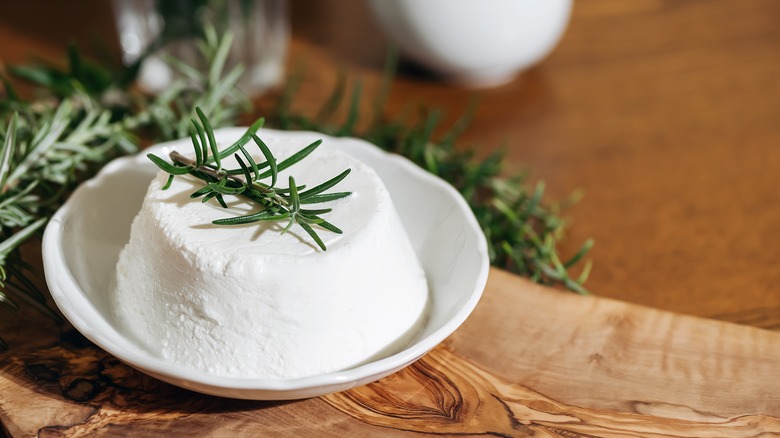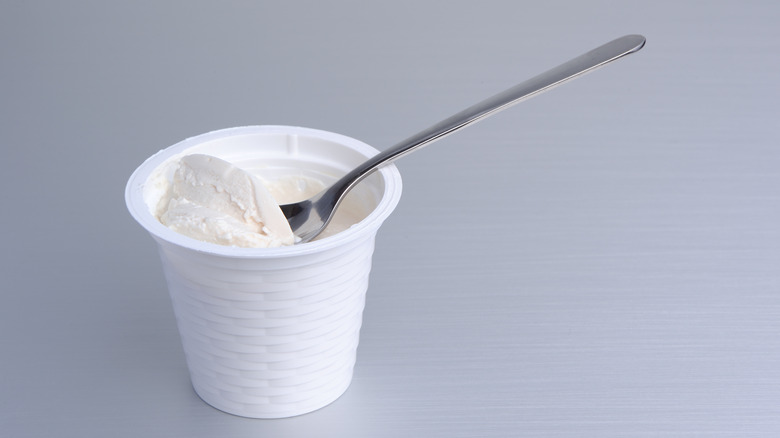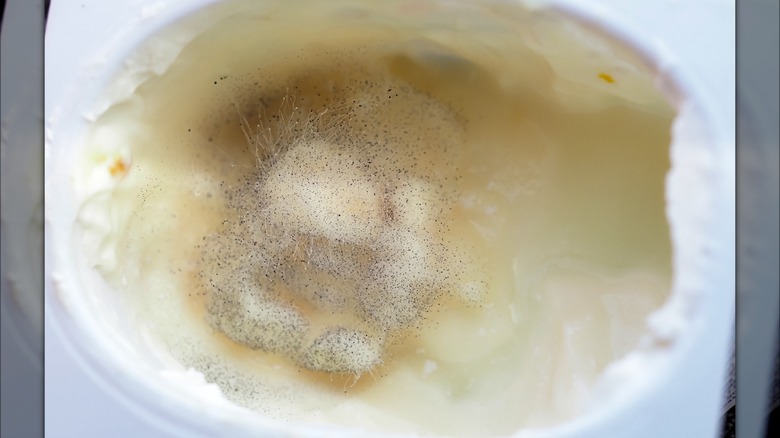How Long Ricotta Cheese Will Last After Opening
Ricotta is a soft cheese that adds a touch of decadence when mixed into sauces and truly shines when used in stuffed pasta dishes like ravioli and cannelloni, or as a substitute for béchamel in lasagna. However, it's not the kind of ingredient you'd end up using in everyday dishes, so after one great meal, that open tub of ricotta can end up sitting in the fridge waiting for its next time to shine. But how long do you have?
Due to their higher moisture content (compared to hard cheeses), fresh cheeses tend to have a shorter shelf life and are more prone to mold. Guidance from the USDA says you've got about a week to use them up before the proposition becomes iffy. And while an aged cheddar or parmesan block can be salvaged by cutting out the moldy parts and surrounding areas, this won't work with ricotta. A soft cheese must be thrown out at the first sign of spoilage. And, in case you were wondering, freezing is not an option with ricotta, as it degrades its texture.
Fortunately, ricotta has a mild, milky flavor and aroma, making it relatively easy to tell when something's off. A basic smell and sight test can help you confirm if you can still use that open tub or if you'll have to bin it and buy a new one, which, hopefully, will not share the same fate.
Use up ricotta cheese within a week of opening
A new, sealed package of ricotta will generally last about two weeks in the fridge, provided it's been stored correctly and hasn't spent over two hours at room temperature. But once opened, a full week is the limit, and even sooner if you unsealed it close to the expiry date. Several factors can reduce ricotta's shelf life. To stretch it, keep the container closed and refrigerate it promptly. Using a clean spoon when you take some out from the container is also essential. As always with fresh ingredients, it's important to ensure your fridge is set to 40 degrees Fahrenheit or below to avoid spoilage.
If a lack of ideas is all that's preventing you from using the remaining ricotta, there are some quick and easy ways to use it. More versatile than most cheeses, ricotta feels right at home in sweet and savory dishes and even works as a great breakfast add-on to level up your scrambled eggs and omelets. You can also add ricotta to crepes, french toast or pancake batter, or simply enjoy its creaminess with fresh fruit.
How to tell if ricotta cheese has gone bad
If you feel you may have waited too long and are hesitant to use ricotta that's been open for some days, a few simple checks can help you decide. The first step is to look for signs of discoloration or spotting caused by mold. Even though some of the world's most expensive cheeses benefit from it, mold does not belong on ricotta. The cheese must be completely white and should not have any separated water. (Note that this is another benefit of always using a clean spoon to scoop out ricotta since bits of food from a used spoon can be confused with mold.)
Next, ensure that no sour or fermented odors are coming from it. Ricotta is a fresh, soft cheese, so any pungency is a sign of spoilage. Once you're sure it smells fine, do a final taste test for any hints of sourness. Ricotta's low salt content, which is partly responsible for its short shelf life, also makes it easy to check for any inconsistencies in the flavor. If it passes the sight, smell, and taste tests, the leftover ricotta is most likely alright to eat. However, if you're ever in doubt, it's better to be on the safe side and throw it away.


